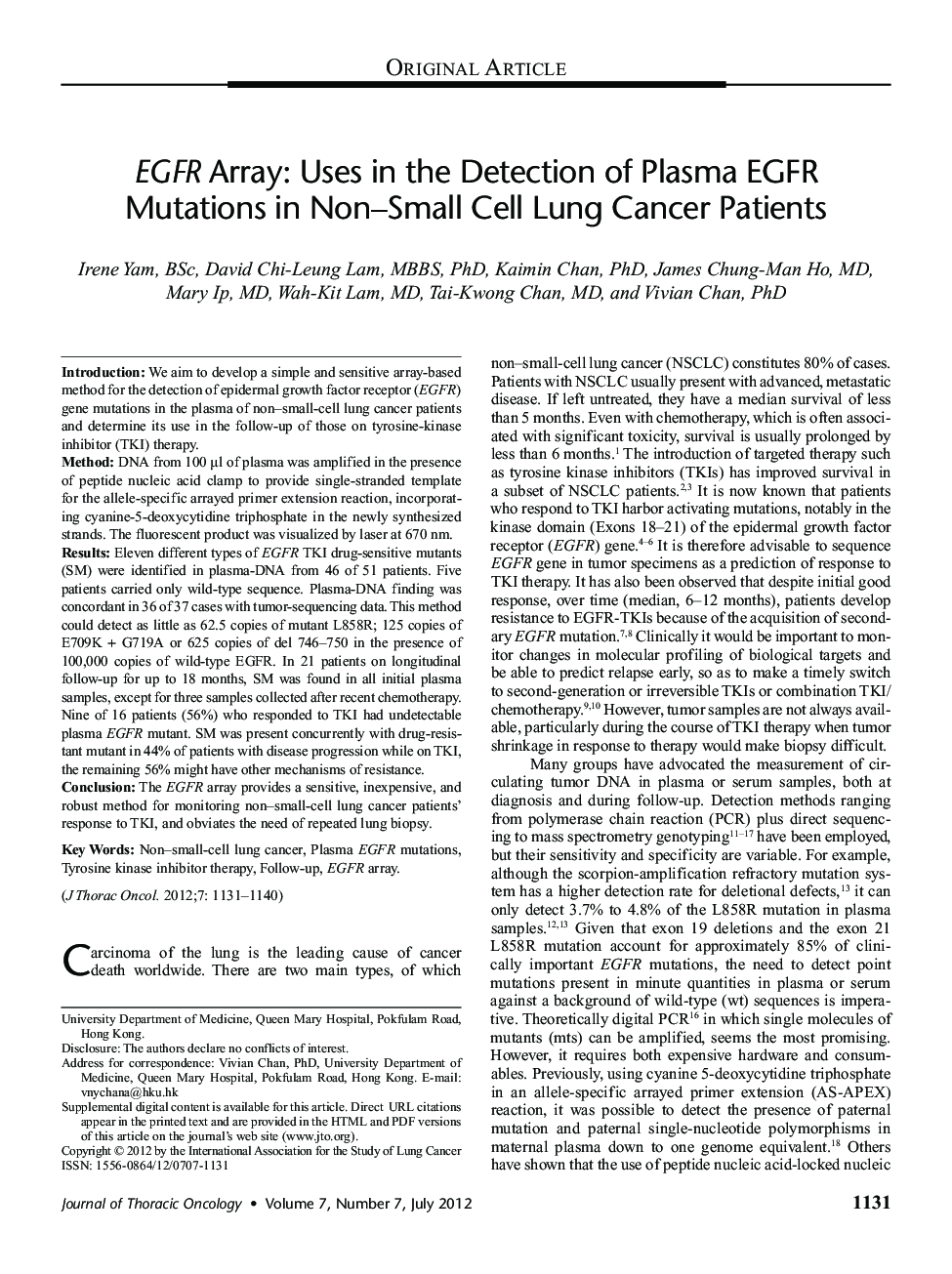| کد مقاله | کد نشریه | سال انتشار | مقاله انگلیسی | نسخه تمام متن |
|---|---|---|---|---|
| 3990482 | 1258738 | 2012 | 10 صفحه PDF | دانلود رایگان |

Introduction:We aim to develop a simple and sensitive array-based method for the detection of epidermal growth factor receptor (EGFR) gene mutations in the plasma of non–small-cell lung cancer patients and determine its use in the follow-up of those on tyrosine-kinase inhibitor (TKI) therapy.Method:DNA from 100 μl of plasma was amplified in the presence of peptide nucleic acid clamp to provide single-stranded template for the allele-specific arrayed primer extension reaction, incorporating cyanine-5-deoxycytidine triphosphate in the newly synthesized strands. The fluorescent product was visualized by laser at 670 nm.Results:Eleven different types of EGFR TKI drug-sensitive mutants (SM) were identified in plasma-DNA from 46 of 51 patients. Five patients carried only wild-type sequence. Plasma-DNA finding was concordant in 36 of 37 cases with tumor-sequencing data. This method could detect as little as 62.5 copies of mutant L858R; 125 copies of E709K + G719A or 625 copies of del 746–750 in the presence of 100,000 copies of wild-type EGFR. In 21 patients on longitudinal follow-up for up to 18 months, SM was found in all initial plasma samples, except for three samples collected after recent chemotherapy. Nine of 16 patients (56%) who responded to TKI had undetectable plasma EGFR mutant. SM was present concurrently with drug-resistant mutant in 44% of patients with disease progression while on TKI, the remaining 56% might have other mechanisms of resistance.Conclusion:The EGFR array provides a sensitive, inexpensive, and robust method for monitoring non–small-cell lung cancer patients’ response to TKI, and obviates the need of repeated lung biopsy.
Journal: Journal of Thoracic Oncology - Volume 7, Issue 7, July 2012, Pages 1131–1140